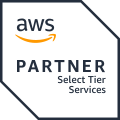Leveraging Drupal Website Security to Mitigate Internet Risks
Create a Secure Drupal Environment
Ensuring your security on the Drupal platform is crucial to your company’s success.
The Drupal best practices in this white paper will help you protect your vulnerabilities, mitigate your security risks, and prevent worst-case scenario breaches. Fill out the form to download it now!


